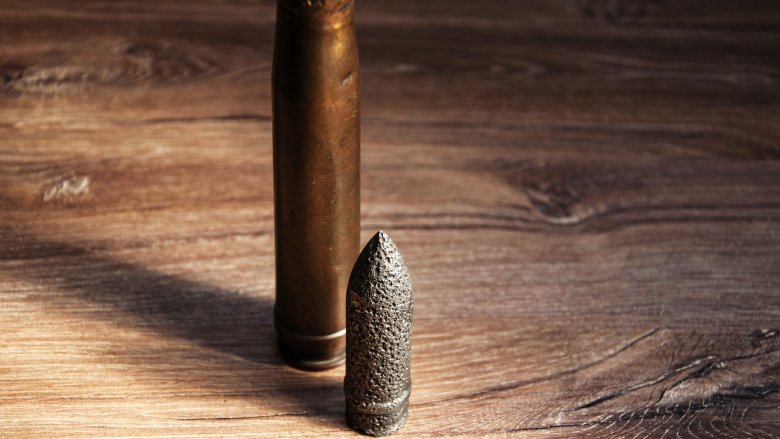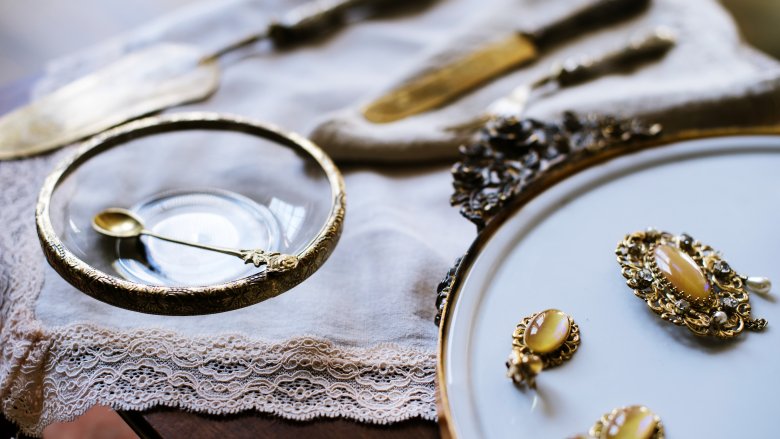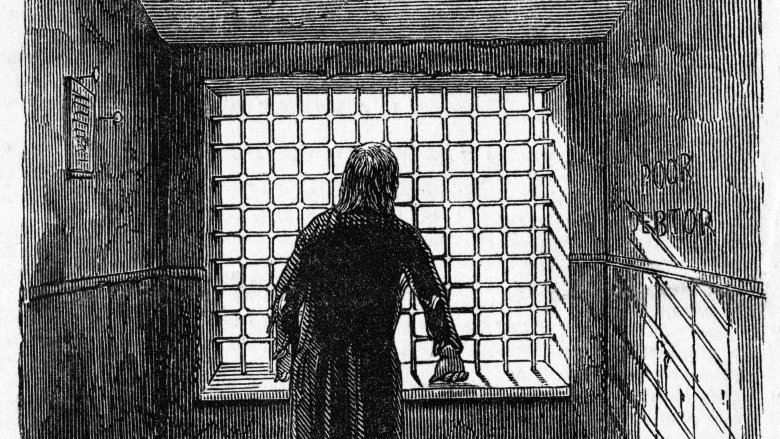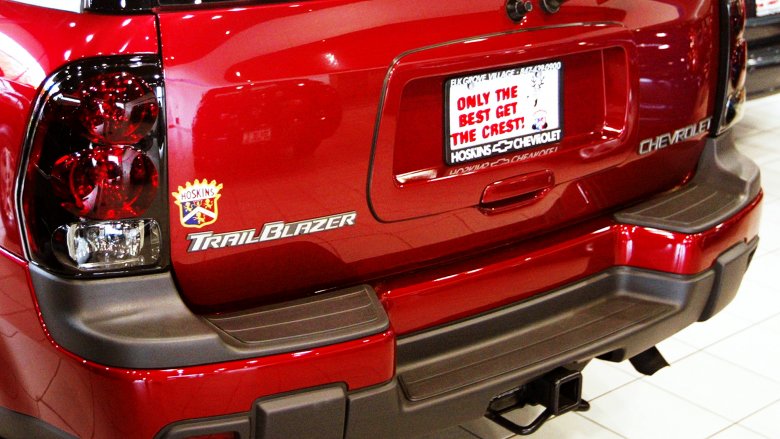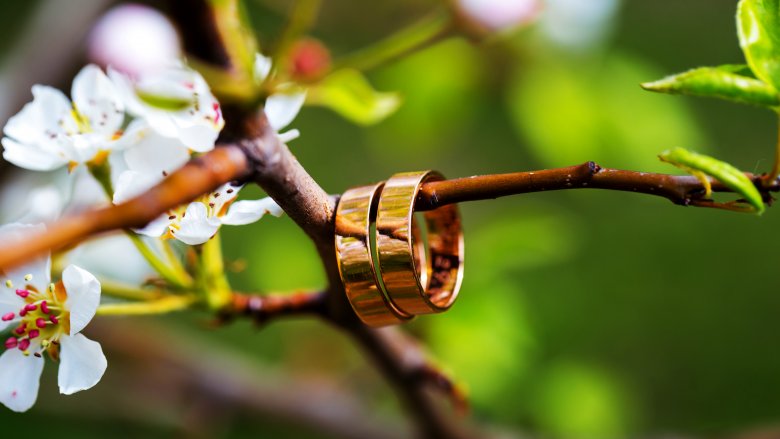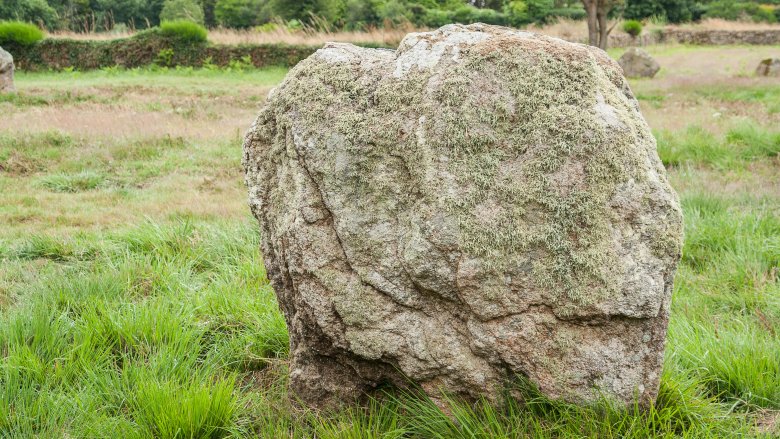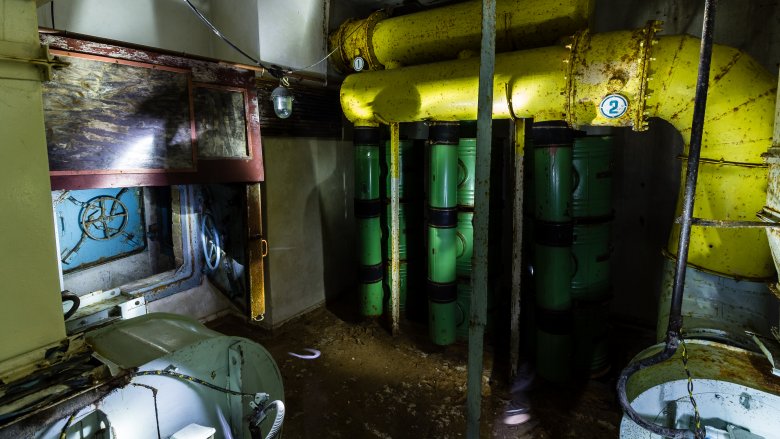Bizarre Things People Dug Up In Their Backyard
Few people actually want to go through all the bother of digging up a backyard, no matter how fun the final project might be. You just want to hop in that swimming pool or light up that fire pit, and we get it. There's no amount of day drinking that can make some projects better, but what about the prospect of stumbling across some buried treasure or a priceless artifact? You just might...because these people did.
A Ferrari Dino 246 GTS
The kids digging in the mud outside of a Los Angeles home in 1975 weren't even doing anything useful when they hit something metallic. Swearing it felt like the roof of a car, they did the smart thing and found a sheriff. It wasn't just a car, it was a 1974 Ferrari.
We'll say this: you can't make this stuff up. Jalopnik traced the strange story of the car, and found it was reported stolen by its owner—Rosendo Cruz of Alhambra—on December 7, 1974. When it was dug up a few years later, no one knew anything about it (the house's residents had only been there a few months), and strangely, there'd been an attempt made to wrap it in plastic and keep the dirt out. With the insurance company presumably shaking their heads, shrugging their shoulders, then going for a drink, they called it a theft and paid off the loss.
There was a bit more to the story; Cruz had, indeed, apparently hired some goons to steal the car and chop it for parts. They couldn't bear to cut it up, through, so they buried it in LA. After being sold a few more times it was ultimately restored. Jalopnik also found also found the current owner, and it's still on the road, an advertisement for Italian engineering if there ever was one.
A ton of WWII bombs
Sure, it's not surprising there's a ton of World War II-era ammunition still scattered across the countryside in France or Germany. That's not what we're talking about, though—these bombs were found in Orlando, Florida.
According to CNN, the first one that alerted residents to the problem was near the Odyssey Middle School track. A few people were injured when it caught fire, and in 2008 the Army Corps of Engineers kicked off a $10-million cleanup project across the whole area. They started going door-to-door though the neighborhood—an area filled with homes worth half a million each—sweeping the area, and digging up the live bombs when they found them. By 2016, the Orlando Sentinel reported more building projects were slated for the area, and even though it was probably safe there was another, privately-funded cleanup scheduled, too.
Residents were understandably peeved, but the Army was quick to point out there were public reports published years prior. The entire area—all 12,000 acres—was used by the Pentagon during World War II, and most shocking of all? There's 9,000 other areas like it across the US. If World War II is your thing, grab a shovel and...wait. Don't start digging. Get a metal detector instead, and tread lightly.
One of New Orleans' oldest burial grounds
All Vincent Marcello wanted to do was install a pool. In April 2010, he hired an archaeologist to do a survey of the area, a surprisingly responsible move reported by The Times-Picayune six years later...because that's how long it's taken to excavate the 18th century cemetery he discovered beneath his property.
The dig uncovered 15 wooden coffins, each one weighing around 700 pounds. Each one was sent to Louisiana State University for DNA testing, and even though they know the bodies were buried in what was once St. Peter Cemetery, the records were destroyed in a 1788 fire and identification will be impossible. They do hope to learn some basics about the people buried in the cemetery, which opened for business in 1723. (Around the same time settlers in the brand, spankin'-new city of New Orleans realized they couldn't bury people along the Mississippi levee, because flooding would force the caskets loose.)
There's still more remains buried under the property, but the excavation stopped, pool installation continued, and we're guessing there's going to be some oddly-themed pool parties held at that house, as Marcello says, "It doesn't bother me at all."
A 650-year-old treasure hoard
If finding some real buried treasure is something you've closed your eyes and wished really, really hard for, let's give you a little bit of hope that dreams do come true. In 2011, CBS News picked up a story from Vienna, in which an ordinary, regular sort of guy only identified as Andreas K. dug up some buried treasure while working in his back garden.
According to the story, he was digging up an area of the garden with the intention of expanding his pond when he turned up a 650-year-old hoard of medieval jewelry and ornaments. He didn't recognize their value at the time, and dumped the hoard into a dirt-filled box and chucked it in the basement. It was only when he sold his house in 2009 that he found the box again. Some of the dirt had fallen off, and he figured he'd better tell someone. It looked important.
It was, and the Austrian Federal Office for Memorials said there were more than 200 pieces—including belt buckles, plates, and brooches. They called it something right out of a "fairy tale" and that's a fairy tale you'd love to be written into.
$10 million in coins
Ever have anyone tell you to turn off the TV and go outside for a nice walk? Maybe you should, because that's what one stupidly lucky California couple was doing in 2014 when, according to SFGate, they came across eight rusty tin cans partially buried in the dirt. When they dug them up and collected their loot, they found 1,427 coins ultimately valued at somewhere around $10 million.
So, since none of us are going to get a cut of the cash, (although you can buy some of the coins here), let's get to the interesting part—where did these coins come from? Even years later, no one's sure. At first, it was linked to the 1901 theft of six bags of gold coins from the San Francisco Mint, but the coins don't seem to match what was stolen. Others thought it might be a loot from a train or stagecoach robbery, but at least one historian thinks he has good evidence suggesting it was buried there by Jesse James, or at least one of the members of the Knights of the Golden Circle gang.
The gang was active for decades, and millions of dollars in stolen loot was hidden across the country...and never recovered. This treasure hoard seems to check all the boxes to be a part of the KGC reign of terror, and if that doesn't make you want to go outside and get some fresh air, well, we just give up.
The remains of 19th century prison inmates and a president's assassin
In 2016, an optimistic new homeowner moved into an unassuming-looking house in Auburn, New York. He wanted to level some ground to put up a swing set (no word on whether or not there was a white picket fence and 2.5 kids also involved), so he started digging. When he did, he started turning up bones.
Police were called, and all that jazz. The New York Times picked up the story, and says the house stands on land once belonging to the Auburn Correctional Facility. They used that particular patch of ground as a burial site between 1870 and 1909, and more than 300 bodies—all remains of unclaimed prisoners—were buried in what's now the picture of suburbia.
Historians say the men buried there were either executed or died of natural causes, and one name might jump out at you: Leon Czolgosz, who was executed in 1901 for the assassination of President William McKinley. According to The Citizen of Auburn, a little bit of historical digging found references to Czolgosz's disposal, which involved disintegration with quicklime and a burial along that stretch of road. The Times quoted one Fitch Avenue resident as wondering if that's why his vegetables tasted funny and, well, that's a New Yorker for you.
A brand new 2003 Chevy Trailblazer
This one's a lesson in why you should probably take a good, hard look around your property when you move into someplace new, because you never know—there might just be a brand new car waiting to be found.
That's exactly what happened to one Oklahoma family, according to local news station KFOR. For years, the Green family had been using the sweet ramp on their property to get some rad air hang time jumping motocross bikes. (We don't know anything about motocross, that's what it's called, right?) At any rate, it wasn't until 2017 they decided they needed to adjust the ramp (presumably after all that rad-air-time-getting), and when they started to dig, they found a 2003 Chevy Trailblazer.
They reported it to the authorities and let them open the car—just in case—and while there weren't any dead bodies, they did find traces of what looked like insurance fraud. The car had been reported stolen in 2003, and seriously, we can think of loads better (and more fun) ways to get rid of a car...but we're not allowed to discuss that here.
A wedding ring on a carrot
You're already thinking this sounds like something your grandmother forwarded you not long after she got her first AOL email address and discovered chain letters, but it's not. In 1995, Lena Paahlsson (who is, if you couldn't guess, from Sweden), lost her wedding ring.
That's not normally something BBC News covers and it wasn't—until 2011, when she found it. Again, not normally BBC-caliber stuff, but she found it when she pulled a carrot out of her garden. The carrot had grown right up through the middle of the ring, which Paahlsson guessed had been accidentally swept into some vegetable peelings and then thrown out into the garden.
The chances of that are so mind-blowingly slim that if you'd like to just go ahead and say that's a sure sign garden gnomes are 100 percent real, you go right ahead.
An ancient standing stone
Ever hear that thing about something being right under your nose all along?
In 2001, BBC News reported on the historical journey of Stephen Davis. Davis was an amateur historian, and that'll become incredibly obvious in a minute. After researching the history of his Gloucestershire home, he realized there was an ancient standing stone somewhere in the area. Records dating back to 1170 talked about the stone, which—for whatever reason—was called the Horestone, and thought to mark a Bronze Age burial site. There was no more recent mention than one in 1636, and Davis decided to try to find this local monument. So, he started looking.
It took him 18 months of searching before he finally found it...in his own backyard. The stone had been buried beneath some major overgrowth, and once Davis excavated it and got in touch with English Heritage, well, let's just say no one's going to be surprised if he's not a professional historian yet.
A fully stocked fallout shelter
The Atomic Age is oddly fascinating, and our obsession with Fallout proves it. If you had to choose between a treasure of an undetermined monetary value and a fully-stocked, Cold War-era fallout shelter...well, we're not sure about you, but we'd have a hard time choosing. That's why we're totally jealous of Chris Otcasek, who bought a home in 2013 and discovered a pristine, 1960s-era fallout shelter buried 15 feet under his backyard.
The shelter was built by a previous homeowner when the threat of nuclear war was very, very real and Otcasek, because he's an awesome person, told CBS Los Angeles he planned on leaving the shelter exactly how he found it. That includes leaving the stocks of "multi-purpose food," old issues of Analog magazine, vintage medicine kit, and equally vintage Argyll socks right where they were left...just in case.
He's not the only ones who's found a fallout shelter in his backyard, either. Reddit user captainantarctica started this thread asking for more information after finding one of his own, and the prospect of having your own fallout shelter? That's enough to get anybody to start digging.
The partial skeleton of a super-rare, ancient baleen whale
If you ever found something incredibly cool when you were a kid, only to have the adults tell you to be quiet, sit down, and eat your peas, for cryin' out loud...then this one's for you.
In 1978, Gary Johnson was 17. He was walking down a dirt trail near Rancho Palos Verdes when he saw what he thought was a fossil of some sort. He did what any self-professed nerd would do, and he called the history museum. They told him that it was a whale, and according to the LA Times, they didn't have time for it...so go home and eat your peas, kid.
The fossil sat in his backyard for another 35 years, until Johnson got in touch with paleontologist Howell Thomas of the Natural History Museum of Los Angeles. This time, he sat up and listened—presumably because he was talking to an adult now, not a 17-year-old kid. The fossil turned out to be between 16 and 17 million years old, and it's a super-rare baleen whale. There's only about 20 of those fossils in existence, and you better believe they got right out to Johnson's backyard to work out the logistics of just how they were going to get the massive fossil out of the massive rock. There's no word on whether or not Johnson gloated as they took the fossil away, but we like to think that he totally did.


